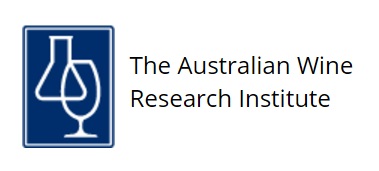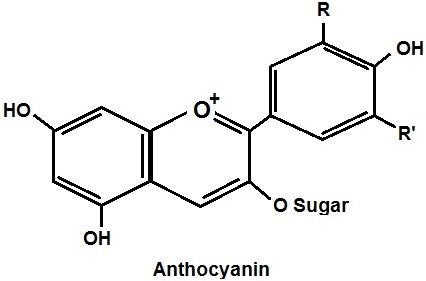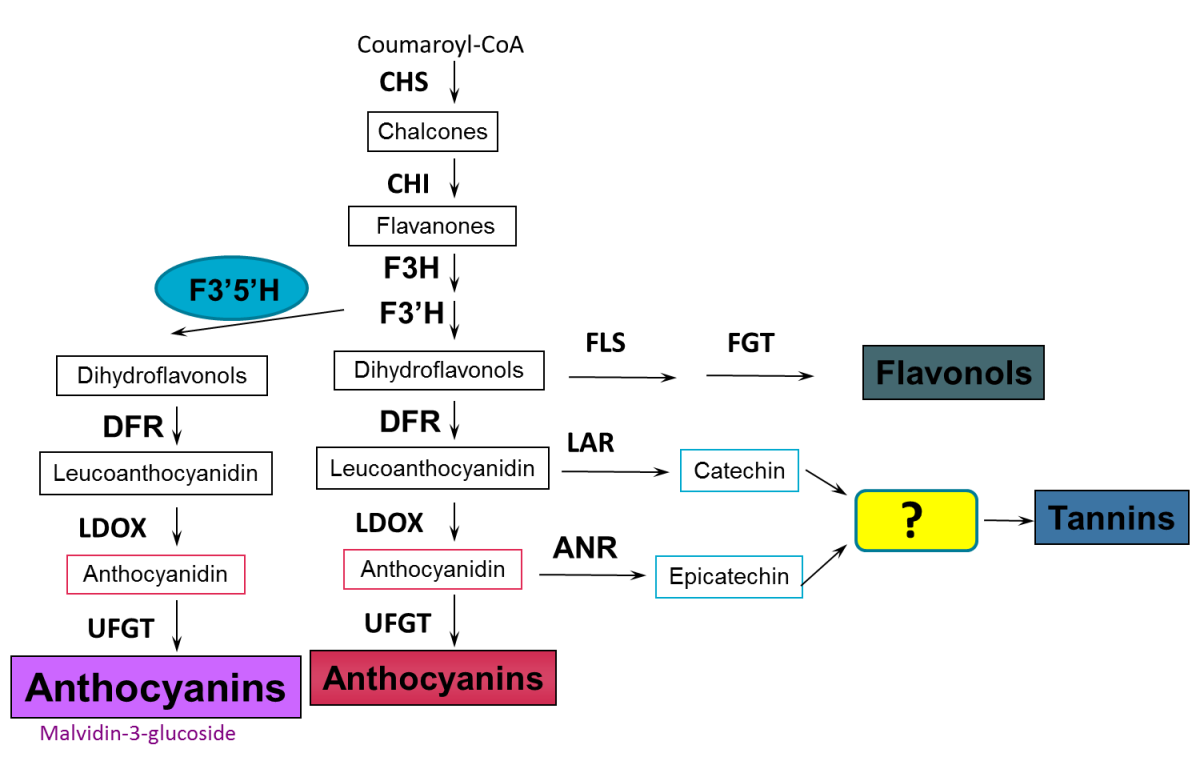Modifying bunch exposure
Canopy management and bunch exposure management techniques have long been touted as tools for managing anthocyanin/colour levels in wine-grapes. However, the results from increasing bunch exposure to direct sunlight or shading appear to be variable and depend on the specific variety, season and site. In some varieties, increasing exposure to direct light has proven effective in increasing anthocyanin, flavonol and tannin (polymeric flavan– 3-ols) levels in grapes. However, at other sites, no effect of bunch exposure has been observed.
Impacts of bunch exposure have been well investigated over the past 35 years. The general consensus is that exposure per se (light influence) does not have a major effect on the anthocyanin levels in common Australian red wine-grape varietals such as Shiraz. However, there may be more of a light influence in varieties such as Cabernet Sauvignon. The effects of light exposure on anthocyanin formation in grapes appear to be more dominant prior to veraison rather than after veraison.
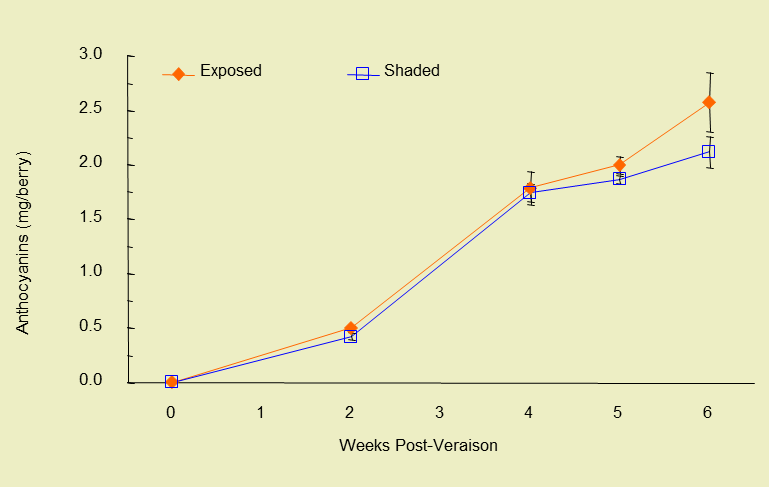
Figure 6. Comparison of anthocyanin levels (mg/berry) of exposed and shaded Shiraz in McLaren Vale. There were no significant differences in anthocyanin levels at harvest between both treatments
Influence of yield and berry size
Yield has often been implicated as being important and inversely related to quality parameters such as anthocyanin levels in grapes. The evidence for such a relationship is weak. The influence of yield is only seen at the extremes, when sugar accumulation is also affected. A more important relationship appears to exist with berry size. Smaller berries have been related to higher concentrations (mg/g) of anthocyanins. This has been thought to be related to an increase in skin surface area per unit volume. However, it appears that this is not necessarily the case; how the grapes have been managed to produce the smaller berry size seems to be more important than small berries per se.
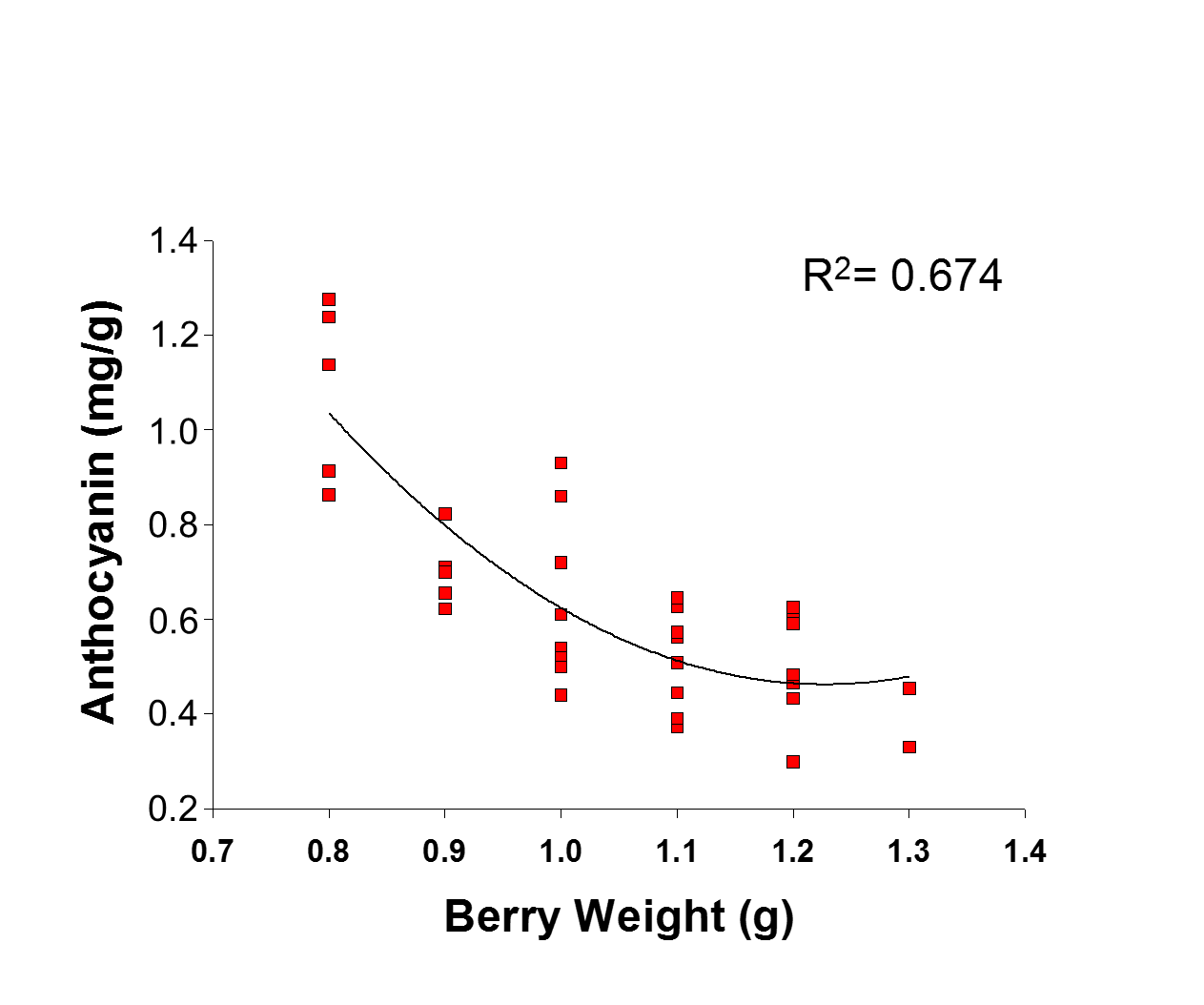
Figure 7. The relationship between berry weight (g) and anthocyanin levels (mg/g) for a range of commercial Cabernet Sauvignon vineyards in the Murray Valley in 2000.
Using irrigation to modify anthocyanin levels
There have been many studies looking at the effect of irrigation on anthocyanin levels in grapes and wine. A number of these have demonstrated that a strategic application of a water deficit, through irrigation strategies such as Regulated Deficit Irrigation (RDI) between berry set and veraison can reduce final berry size and thus improve the concentration of anthocyanins (mg/g) at harvest through a hydraulic effect.
Irrigation research into Partial Rootzone Drying (PRD) has demonstrated that roots growing in a drying soil may result in an abscisic acid (ABA) mediated chemical response, which reduces transpiration, increases water use efficiency and may improve anthocyanin levels (mg/g) in grapes via this hormonal effect. The application of synthetic ABA to grape bunches pre-veraison stimulates anthocyanin and skin tannin accumulation post-veraison. It is important to realise that seasonal effects often outweigh any treatment effects. Therefore the temperature conditions during berry development are critical in determining the level of anthocyanins at harvest.

Figure 8. Partial Rootzone Drying (PRD) irrigation in a Shiraz vineyard in the Murray Darling region.
The influence of vine vigour
In a precision viticulture study of three Shiraz sites across south-eastern Australia, where berry composition and many other viticultural parameters were studied, an inverse relationship between anthocyanin concentration in the grapes and vine vigour was observed. High vigour vines tended to have lower anthocyanin levels while low vigour vines had higher anthocyanin levels. Also, there appears to be a good relationship between anthocyanin and tannin levels in these vineyards as well, both negatively correlated to vine vigour.
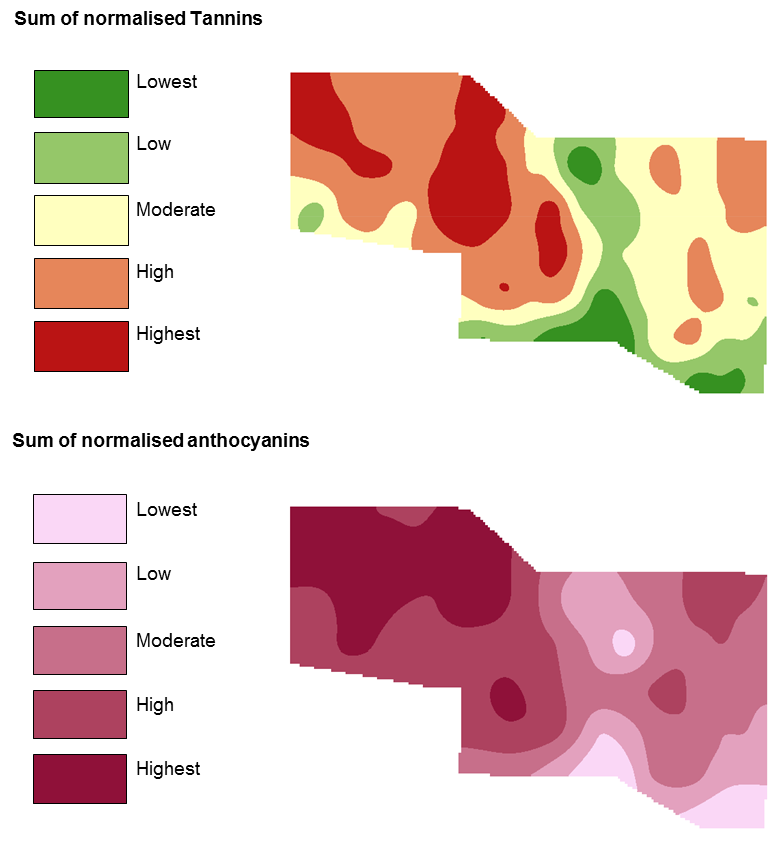
Figure 9. Tannin (mg/g) and anthocyanin (mg/g) variability across a single Shiraz vineyard located in the Murray Darling region in the 2006/07 growing season.
